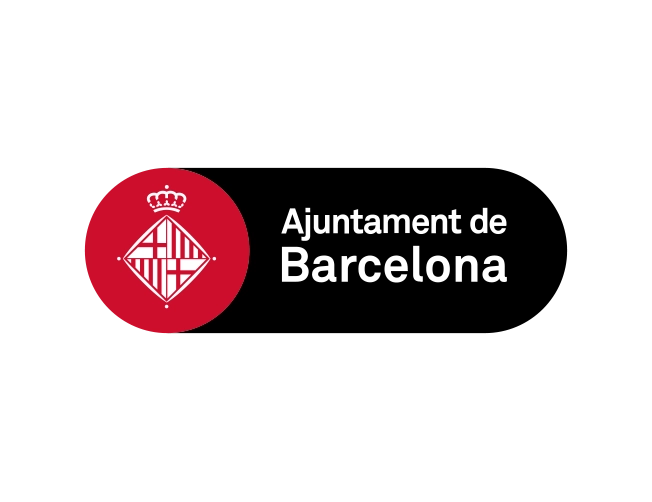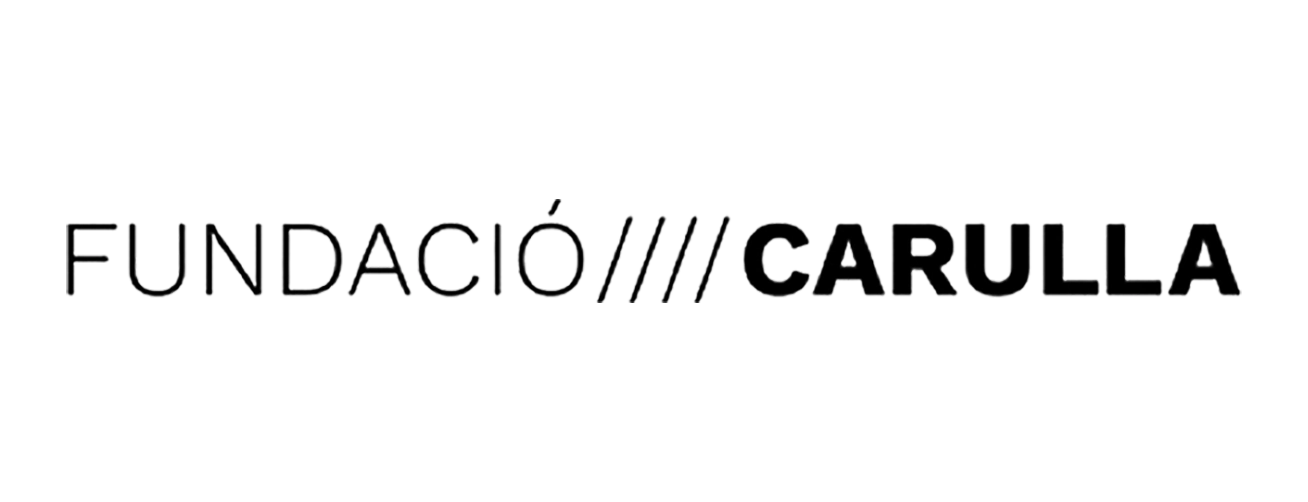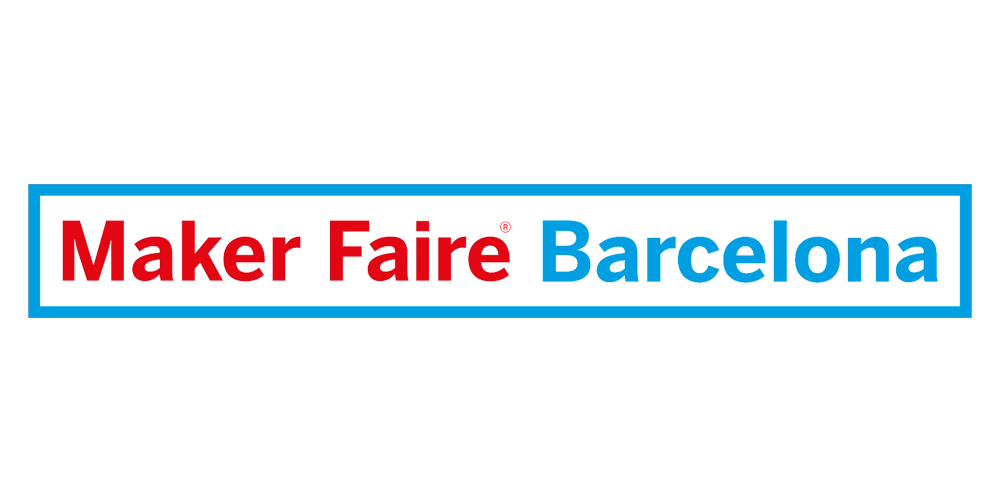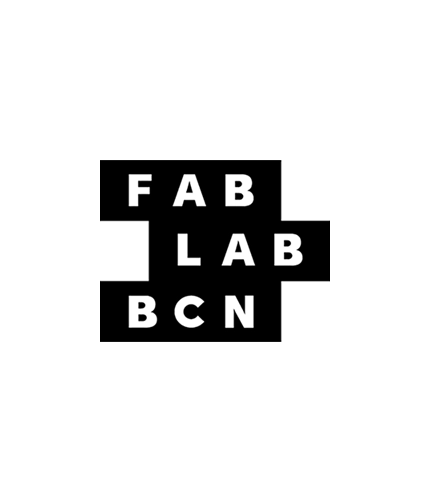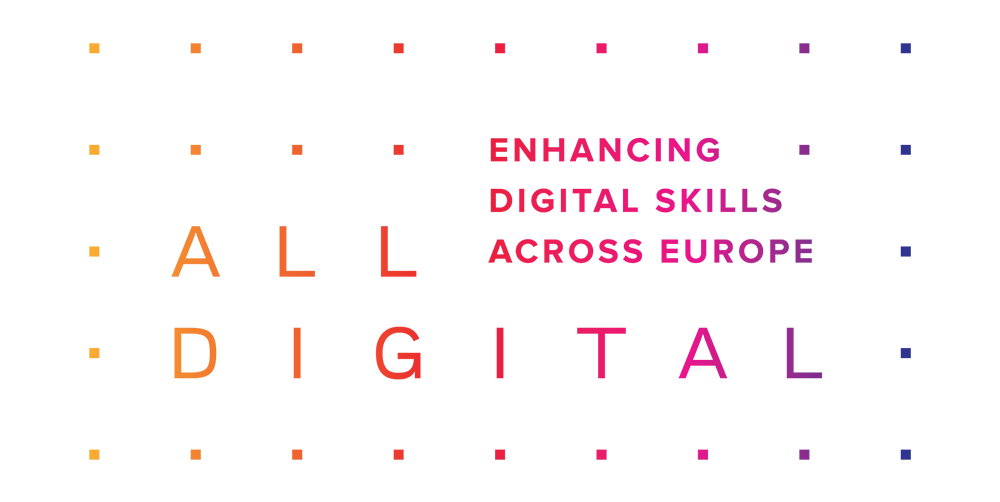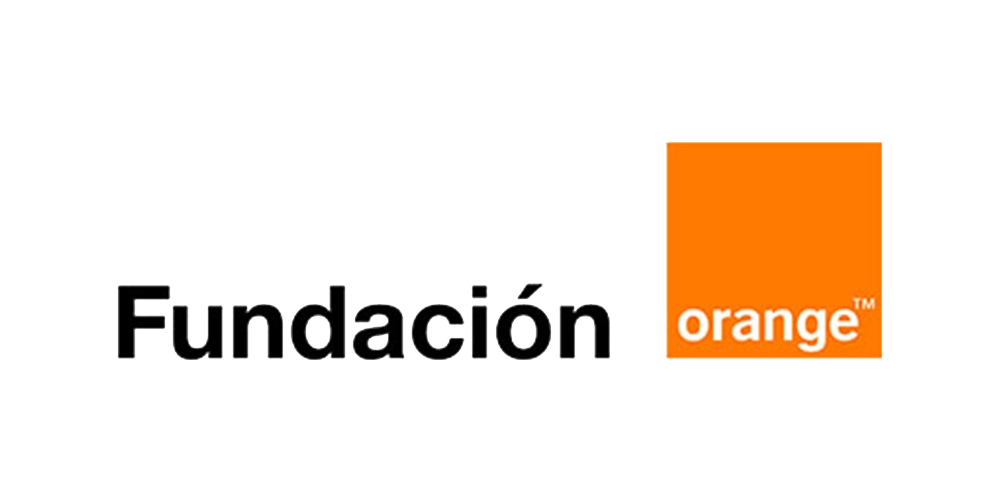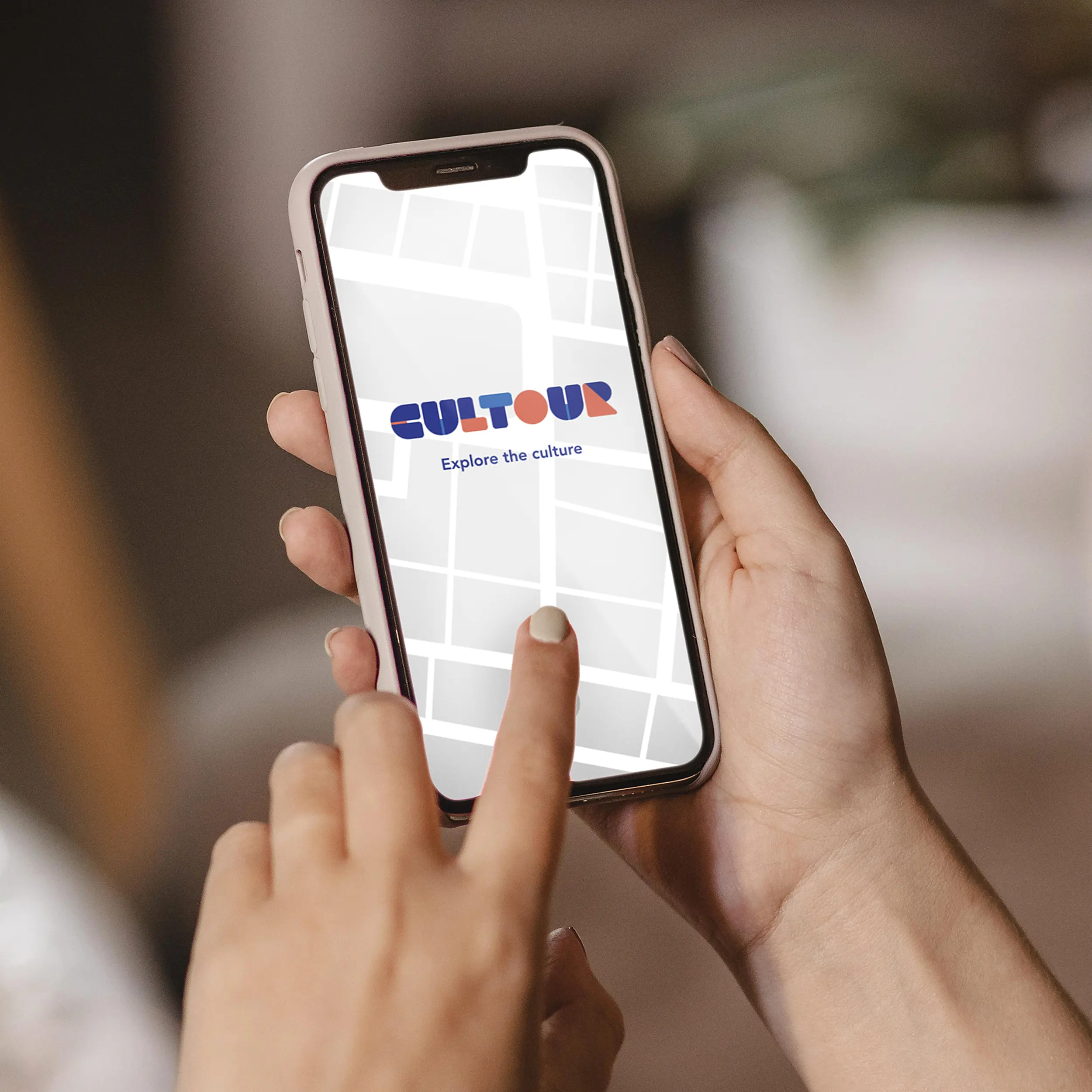
Overview
Discover cities through cultural experiences
Travel has reached an unprecedented level with people exploring different destinations and cultures all over the world. This not only benefits the economy of the destinations but also is an opportunity to promote cultural exchange and personal growth.
Cultour offers cultural tours through comprehensive, engaging audioguides and special offers for services, products and tickets.
For this project, I managed the entire design process from concept to definition, focusing on the user’s core needs and translating them into an intuitive, immersive travel experience that connects users with their destinations.
The challenge
Design a meaningful experience for the concious traveler
How to transform the way travelers connect with the city and its culture. The challenge was to design an intuitive and immersive app experience that lets users discover authentic local stories and cultural gems while navigating the complexities of modern tourism.
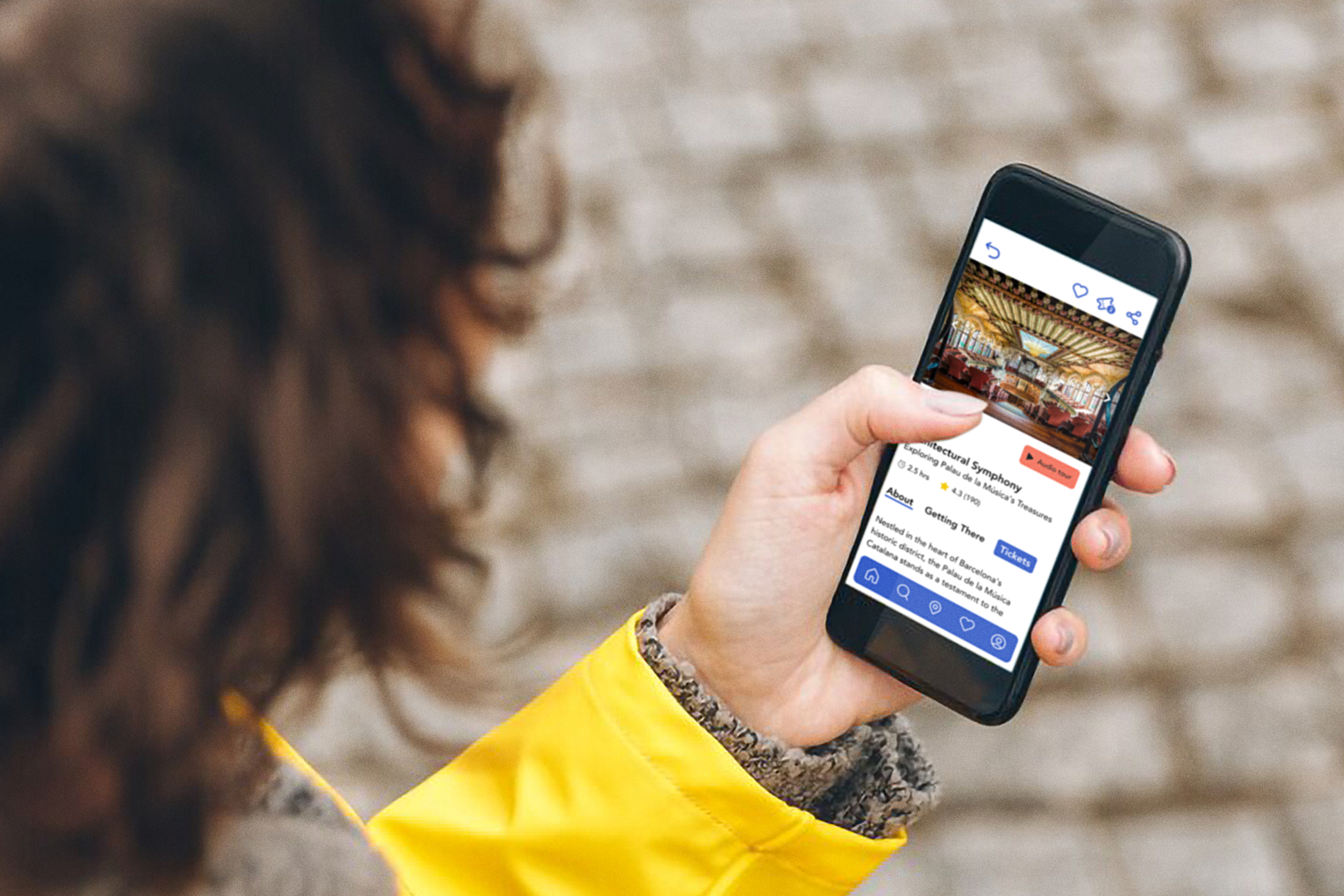
Discovery
Understanding the market
For modern travelers cultural tourism serves as a learning experience and an enjoyable journey, considering it an important way to learn about history and culture of the places they visit.
The market is expected to grow significantly in the upcomming years driven by travelers’ rising preference for unique, immersive experiences that go beyond traditional tourism, allowing for deeper engagement with local customs, art, and culinary traditions.
-
$6.6 billion projected growth of the cultural tourism market by 2028.
-
17.3% expected annual growth rate in the sector.
-
66% travelers who see travel as a way to learn about history and culture.
-
50%+ travelers interested in visiting cultural or historical sites.
-
Sustainable Tourism and responsible travel preferences, especially among millennials and Gen Z.
Sources: Technavio, Data Bridge
The modern concious traveller
I explored the motivations, goals, and frustrations of three diverse personas: Claudia, Ben, and Margaret. Each user, representing a unique demographic and lifestyle, shares a common desire for immersive, authentic, and culturally enriching experiences driven by curiosity and a passion for connecting deeply with their surroundings.
-
Desire for authentic, non-touristy experiences to avoid tourist traps and instead immerse themselves in experiences that feel genuine and unique.
-
Interest in convenient, accessible cultural content to curated cultural information, from historical sites to art and local traditions.
-
Value in tailored experiences and guided assistance to benefit from structured tours and guidance that fit their interests and time availability.
-
Need for time-efficient exploration because of busy schedules or physical limitations mean each user values efficient ways to experience culture without sacrificing depth.
-
Focus on budget-friendly options balancing costs with the desire for rich cultural experiences.
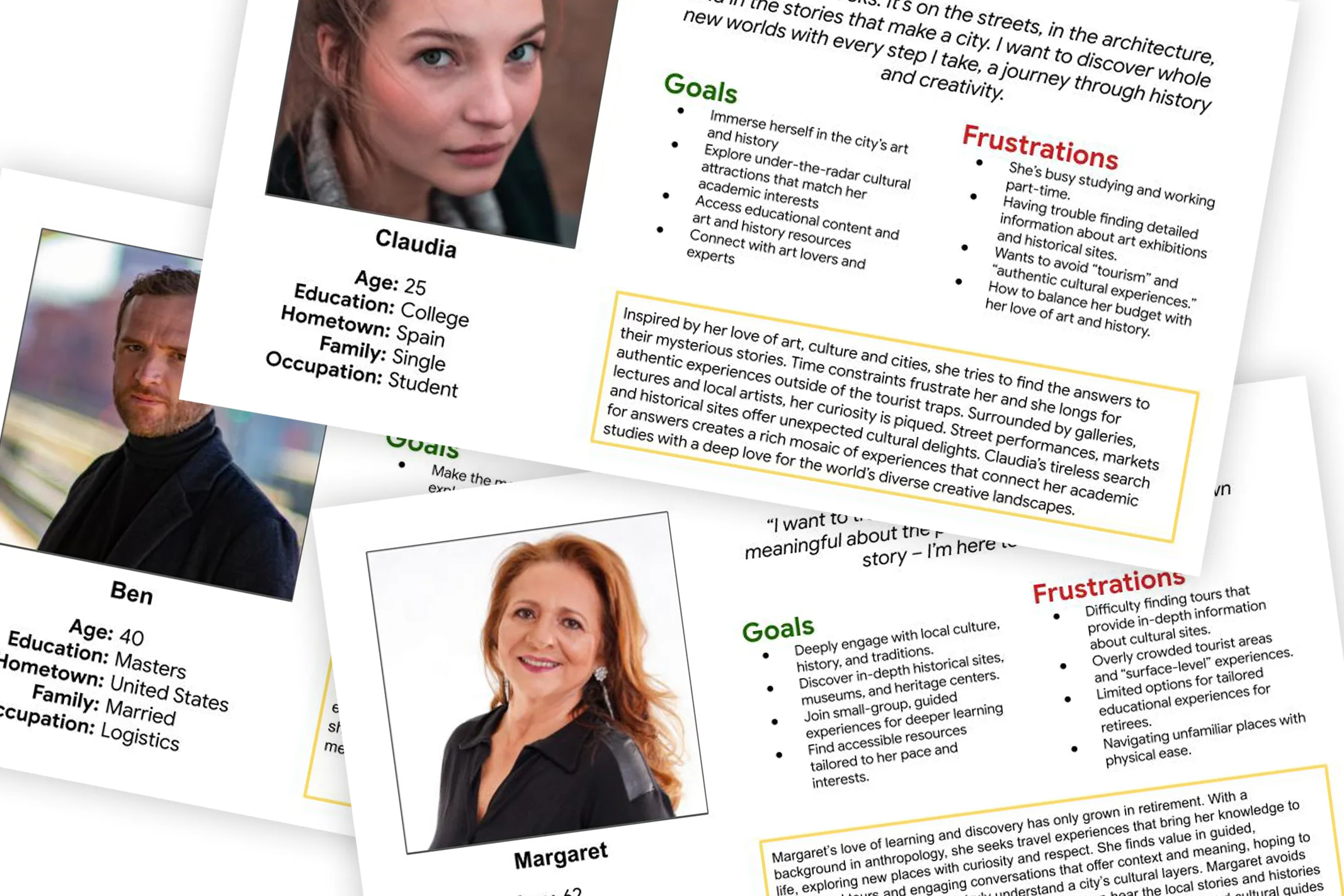
The cultural exploration experience
To understand the user experience I created a journey map to highlight the specific user needs, emotions, and pain points at each stage, providing actionable insights to create a good user experience and achieve business success.
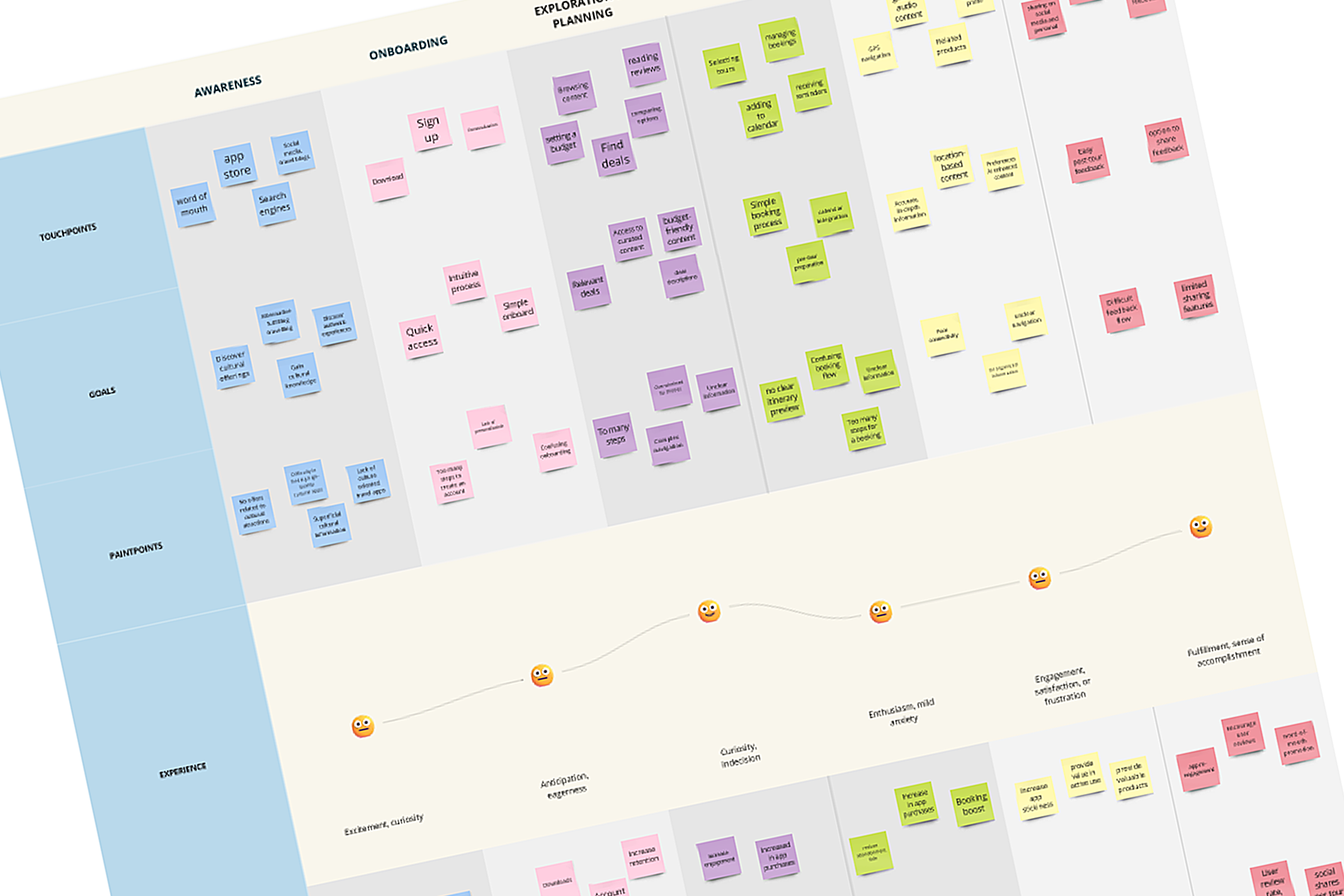
Key insights:
-
Users are actively seeking genuine cultural experiences that go beyond typical tourist activities, emphasizing a need for depth and local engagement.
-
Users find it challenging to discover high-quality cultural content and experiences; improving search and filtering capabilities can enhance the discovery process.
-
The onboarding process can be overwhelming in some apps, highlighting a need for clearer guidance and personalization of the experience.
-
Users feel overwhelmed by the number of options available when planning their excursions; a curated approach could enhance user experience.
-
An intuitive booking process is crucial; users want to make reservations easily without confusion or unnecessary steps.
-
Users might encounter connectivity problems, specialy in countries with limited access, pointing out the need for offline capabilities such as downloadable maps and audio guides.
-
Users appreciate interactive elements, such as notifications for highlights and personalized content, that keep them engaged during their tours.
-
Users want an easy way to provide feedback and share their experiences, which can foster community and enhance credibility. Facilitating this process could boost user engagement and attract new users.
Discovering what other products are doing
I analyzed the competitive landscape for cultural and traditional tourism products looking for insights and opportunities for differentiation. Competing apps generally fall into one of three main categories: traditional travel guide apps, experience-booking platforms, and interactive tour guides.
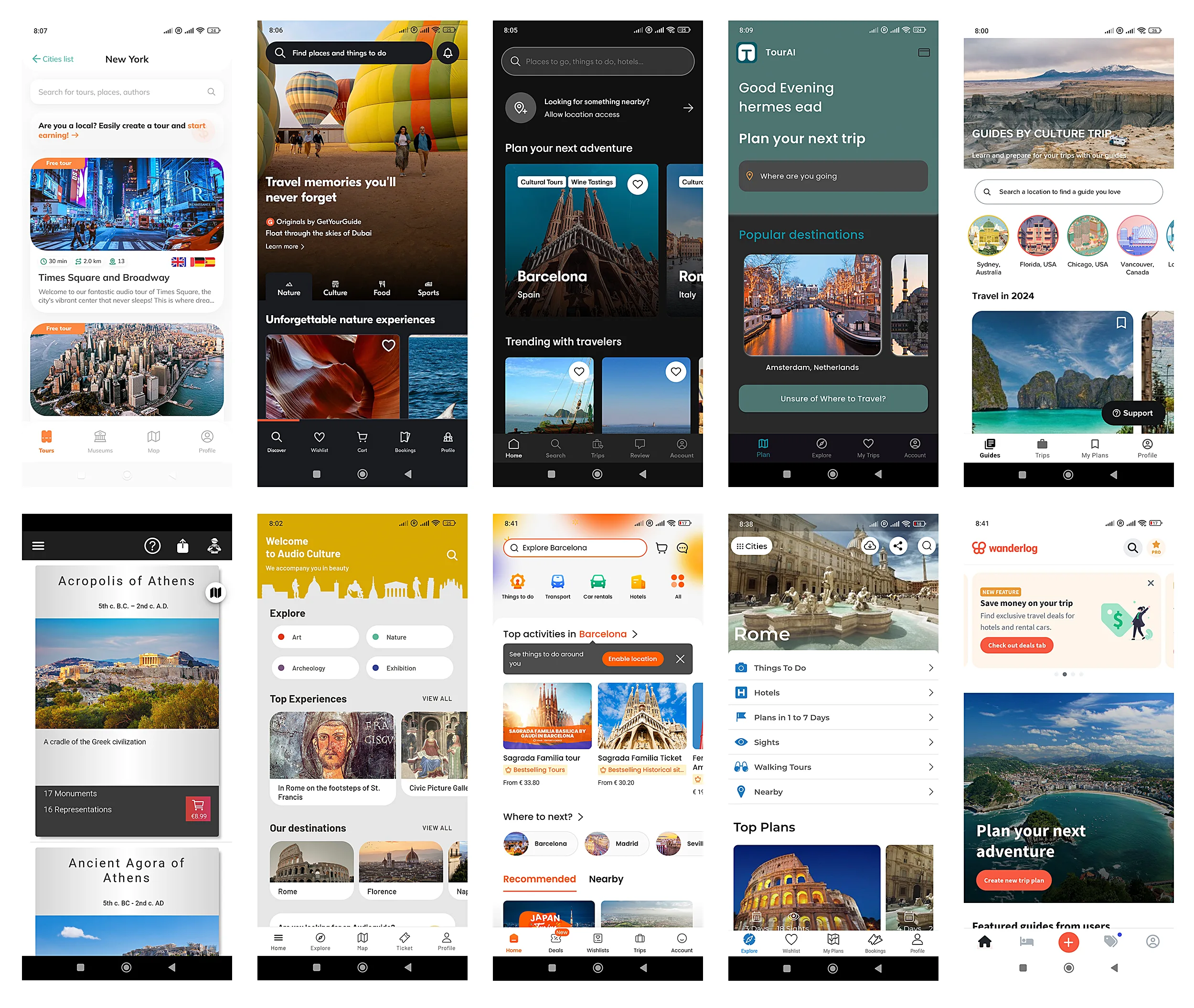
Oportunities for Cultour
-
By using user data to curate content based on individual interests, Cultour can stand out by tailoring the experience to each traveler’s unique preferences, helping users find culturally rich locations that match their specific interests.
-
Adding different layers of cultural content, such as historical details, art analysis, and user-submitted stories, could provide a richer narrative than competing apps.
-
Cultour could enhance user engagement by fostering a community through social sharing and feedback, allowing users to contribute their own experiences and insights.
-
Since connectivity can be an issue for travelers, offering downloadable offline content would improve accessibility and reliability.
-
Connect with local businesses to offer exclusive deals and special promotions.
Exploration
User flow and sketching the screens
I created a detailed user flow to map out each step of the user’s journey within the app, from onboarding to exploring cultural experiences, booking tours, accessing immersive educational content, and making purchases, focusing on minimizing friction to keep users engaged.
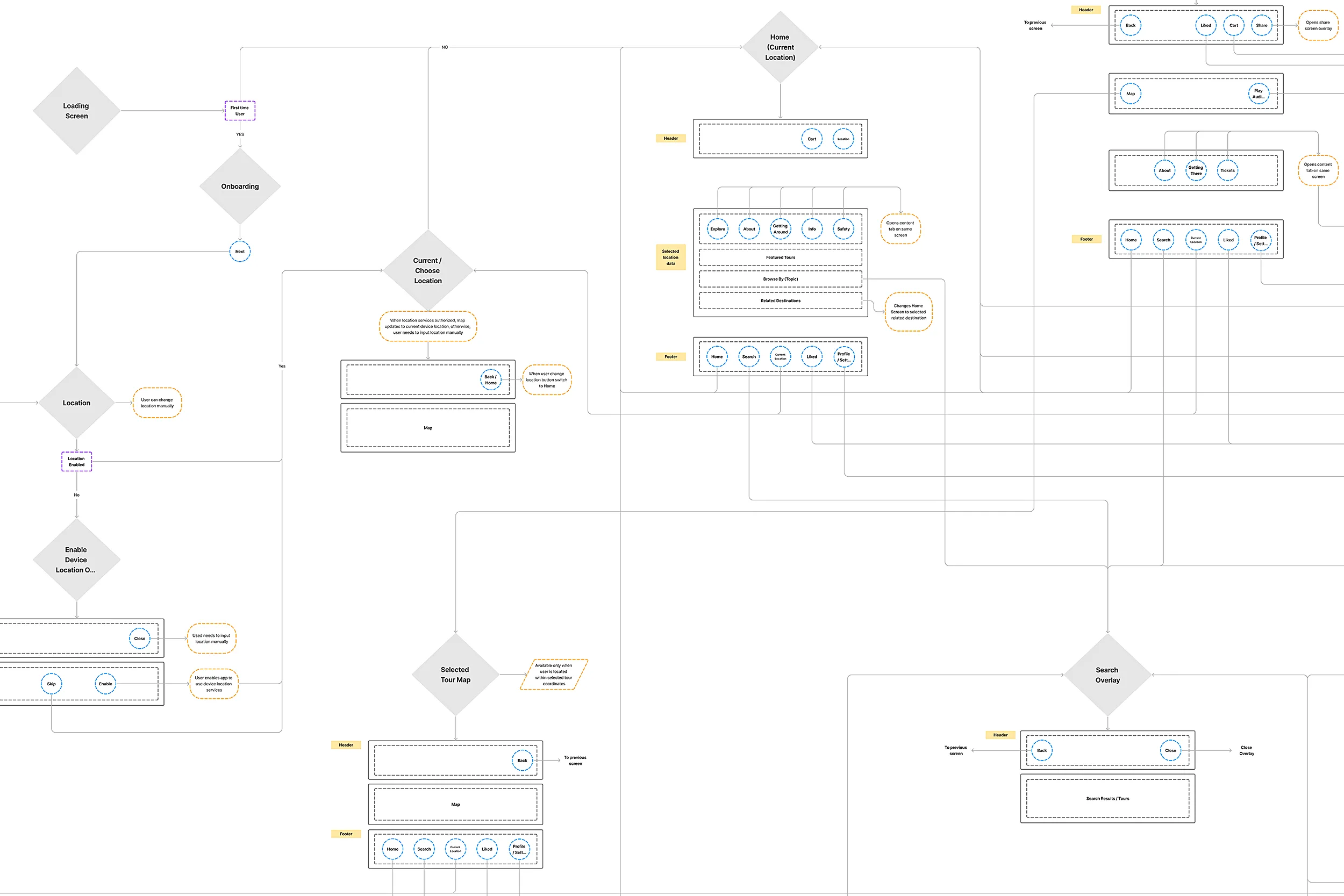
I sketched the core screens to visualize the journey and prioritize essential actions on each screen. These low-fidelity screens focused on layout, functionality, and content placement, enabling rapid iteration which allows to test and refine how users would navigate through the app.
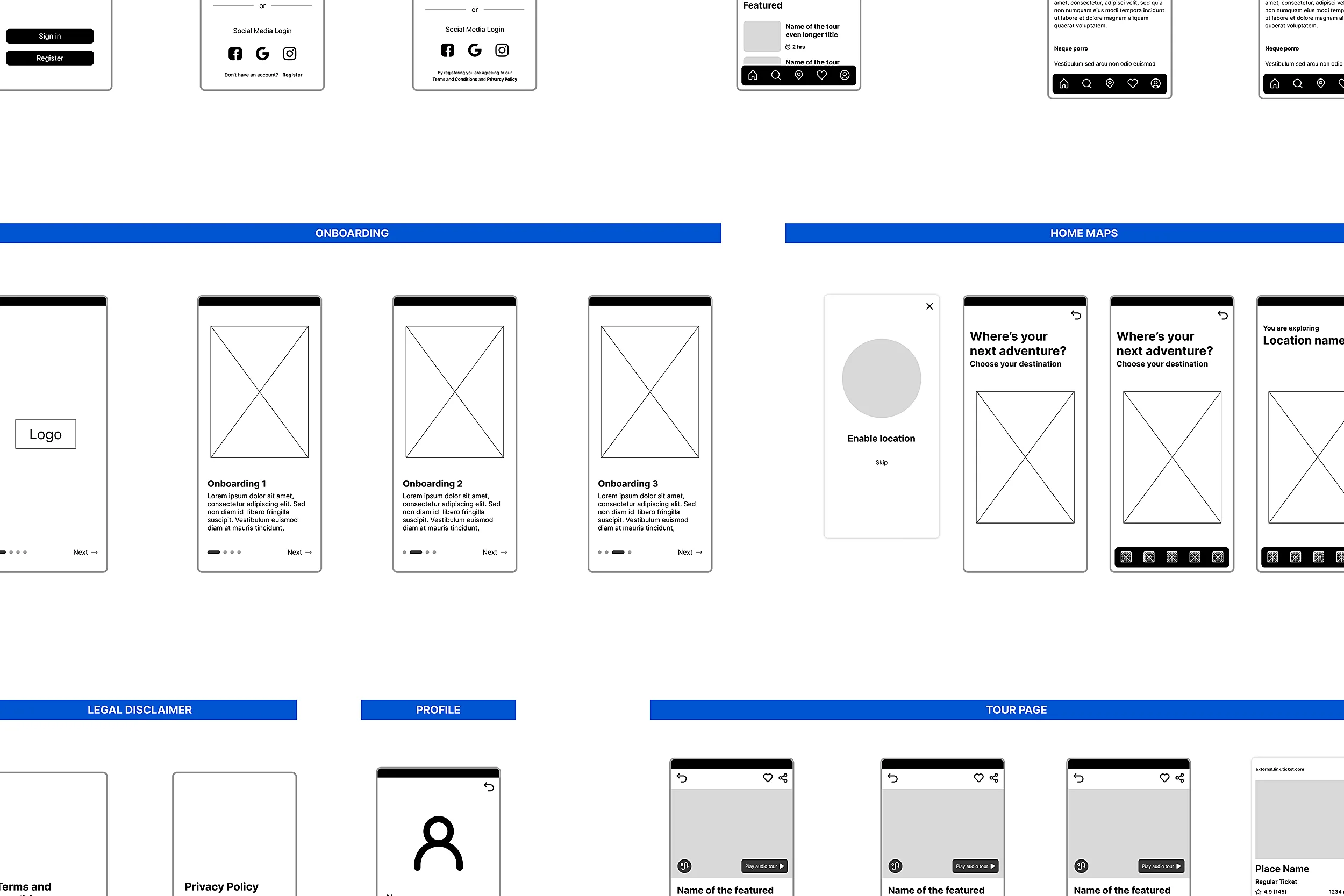
Definition
Visual design
Once the app structure and functionality was clearly defined, the focus shifted to visual design.This involved adding colors, typography, imagery, and branding elements to create a cohesive and visually appealing interface.
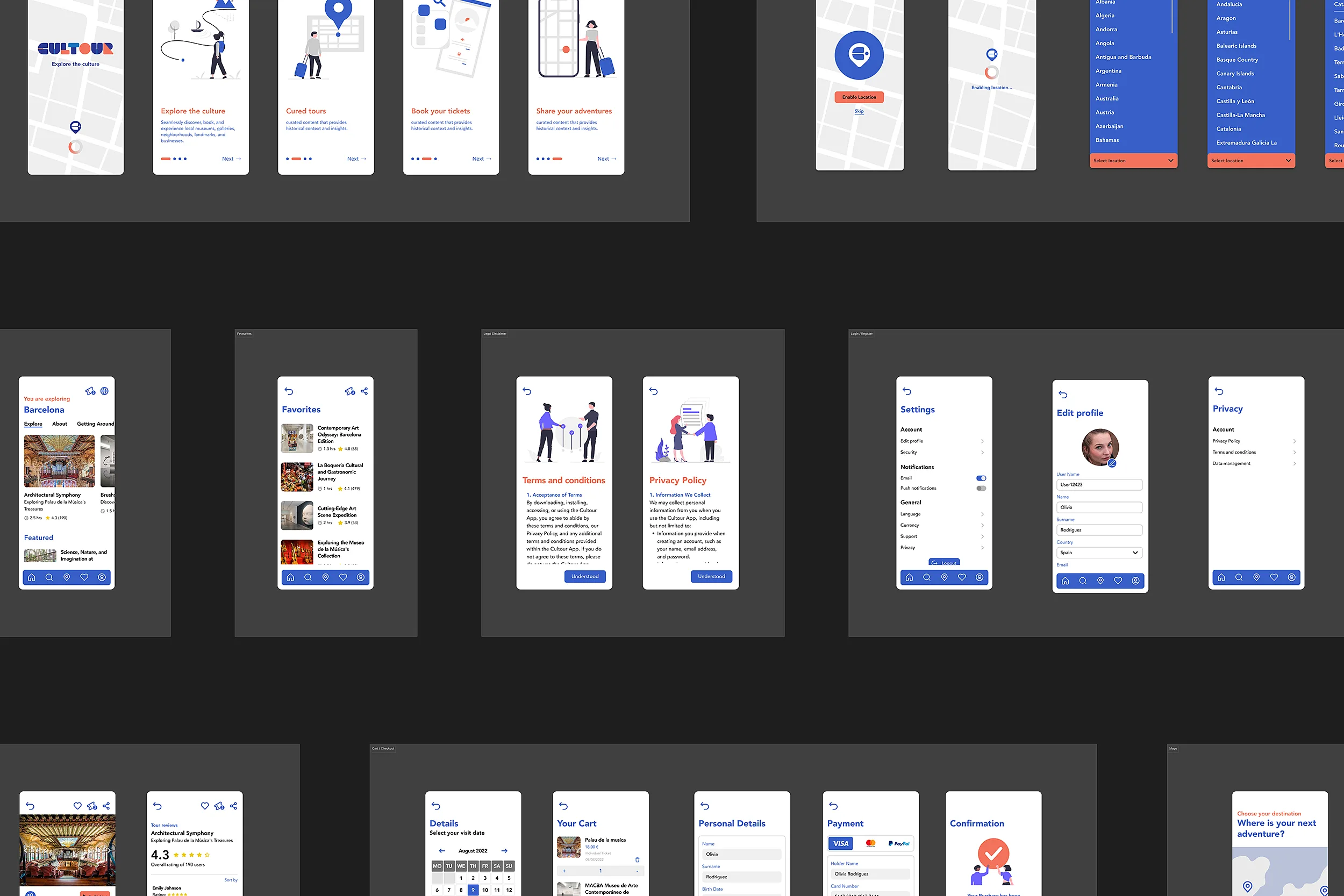
Prototyping the experience
The interactive prototype allowed me to visualize the interactions, providing a hands-on demonstration of the user journey to continue testing its functionality, and make necessary iterative improvements.
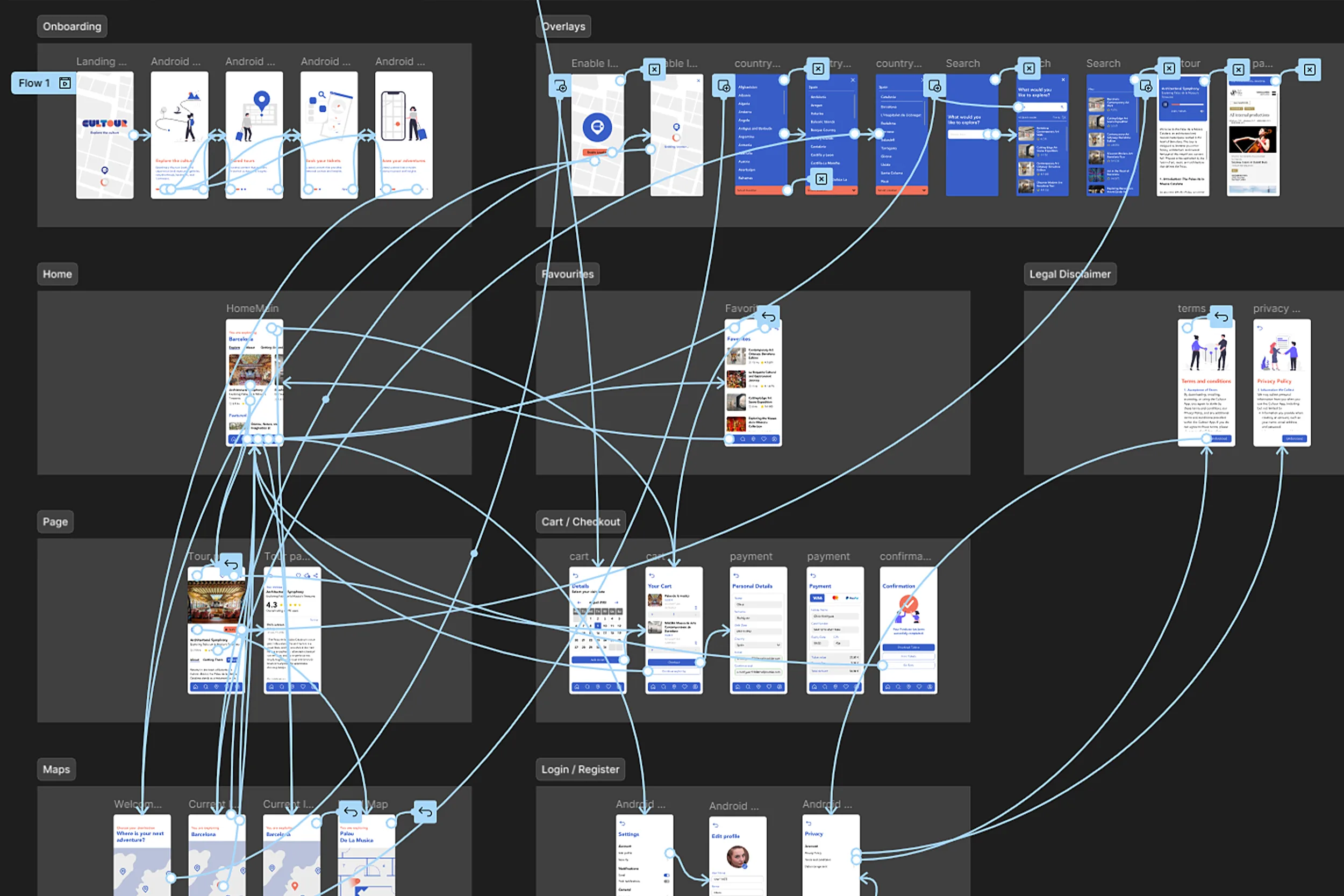
Interactive prototype
Type ‘r’ while hovering over the prototype to restart it.
Solution
Final Results and Future Directions
The project concluded with a design approach focused on achieving a an interface that aligns with the objectives of an engaging simple-to-use design.
Key Achievements:
-
Developed optimized user flows to minimize navigation time and simplify access to core features.
-
Created a cohesive, visually appealing interface aligned with Cultour’s visual identity.
-
Designed and integrated features like guided tours, feedback, and booking options.
-
An interactive prototype ready for usability testing with real users.
Next Steps:
-
Continue testing with target audiences to gather feedback on usability and engagement.
-
Continue the refinement of the prototype based on user insights.
-
Prepare for development handoff with complete design documentation and guidelines.
-
Explore future functionality such as user and AI-generated content, community-building features, and eco-friendly travel recommendations.


